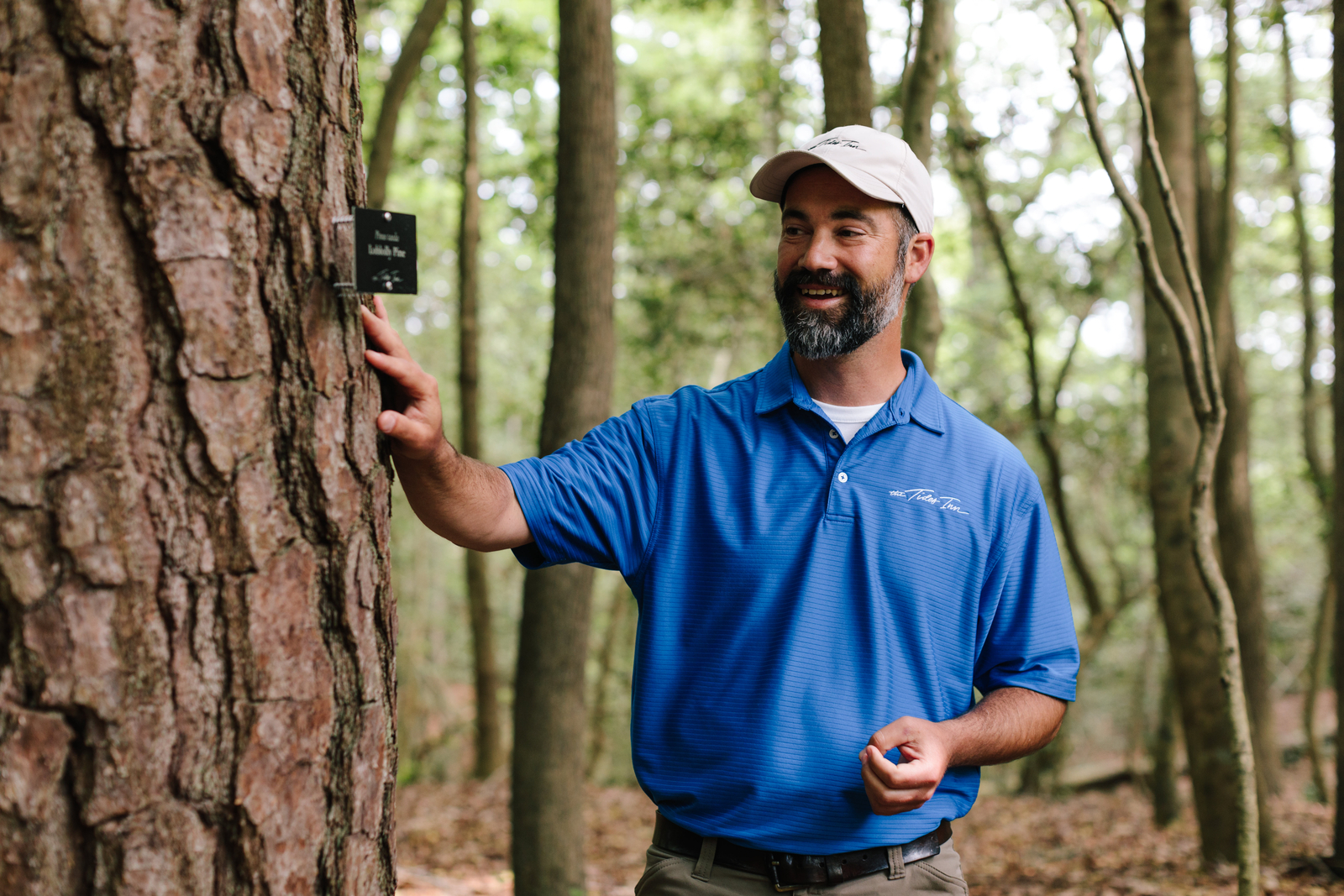Spot These Fragrant Trees and Plants Around Our Property
June 03, 2024

The Chesapeake Bay serves as a critical habitat for more than 3,600 species of plants and animals—which means there’s a lot to see when you’re out walking or biking around the Tides Inn property.
“We have such a diverse number of species here because we’re in a transition zone with our climate—not too far north, not too far south,” says resident horticulturist Matt Little.
We caught up with Little to get the scoop on what trees and plants to look out for through early summer.
Pollinator Garden
The flora tour begins as soon as you arrive at the Tides Inn. The pollinator garden at the entryway is in peak bloom in late spring and early summer. Look for echinacea, mountain mint and yarrow. “It smells good, and it’s full of butterflies and bees,” Little says. “It’s literally buzzing—you can hear it as you walk by.”
Mountain Laurel
This evergreen shrub blooms with clusters of fragrant, white and pink flowers in May and June. As you meander along our Forest Trail, you’ll pass through a mountain laurel grove. Snap a photo with the limbs branching over the path.
Wax Myrtles
A native evergreen, wax myrtles can be found all over the property, from the edge of the marsh all the way along the Forest Trail. The fragrant, olive-green foliage will be peppered up with white berries come fall.
Oak Trees
An array of oak species line the Forest Trail. The shade trees are particularly loved by pollinators and insects: Caterpillars feed on their leaves and hundreds of species of butterflies find shelter in their canopies.
Magnolia Trees
The area surrounding the Tides Inn is home to two species of magnolia: the native Sweetbay magnolia, which is smaller and sprouts creamy white blooms that emit a vanilla-lemon scent; and the large southern magnolia, which produces giant white blooms in June and July.
Tulip Poplars
These hardwoods grow 75-to-80 feet tall, so it can be hard to spot their blooms. But if you crane your neck enough, you may be able to see the hand-size, pink, green and yellow tulip flowers. “A tree can have thousands of them and you’d never know because they’re way above your head,” Little says.
